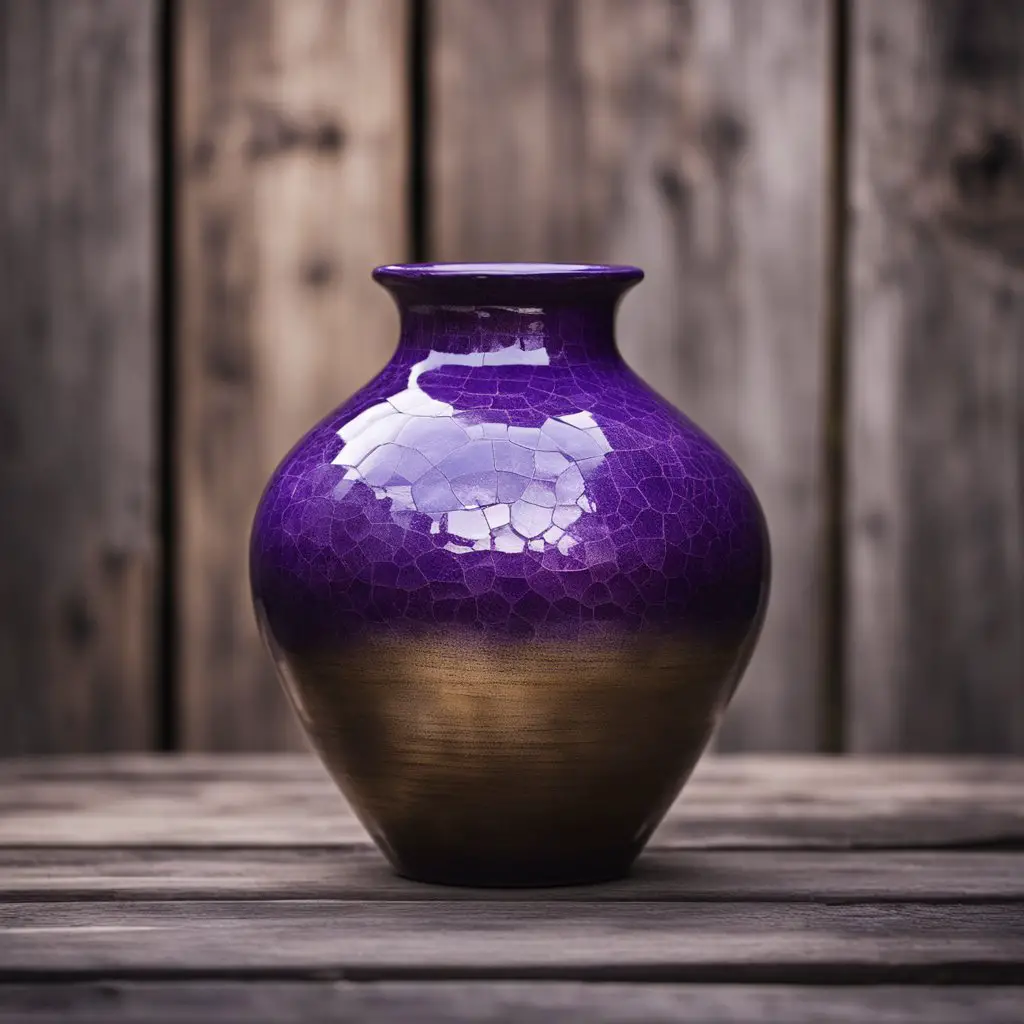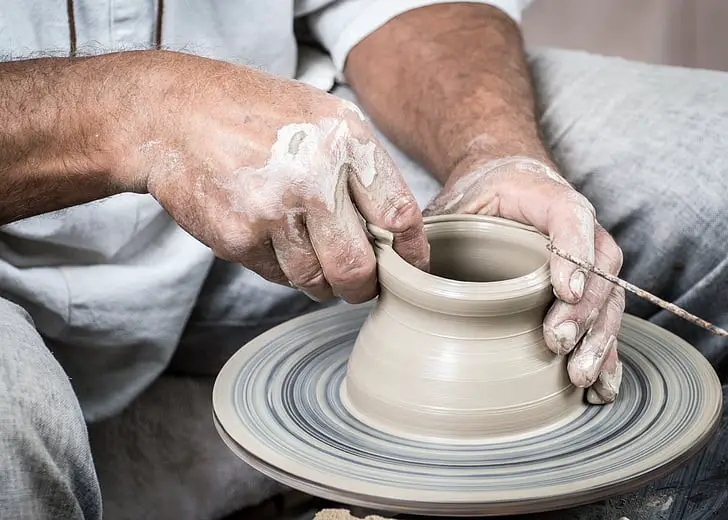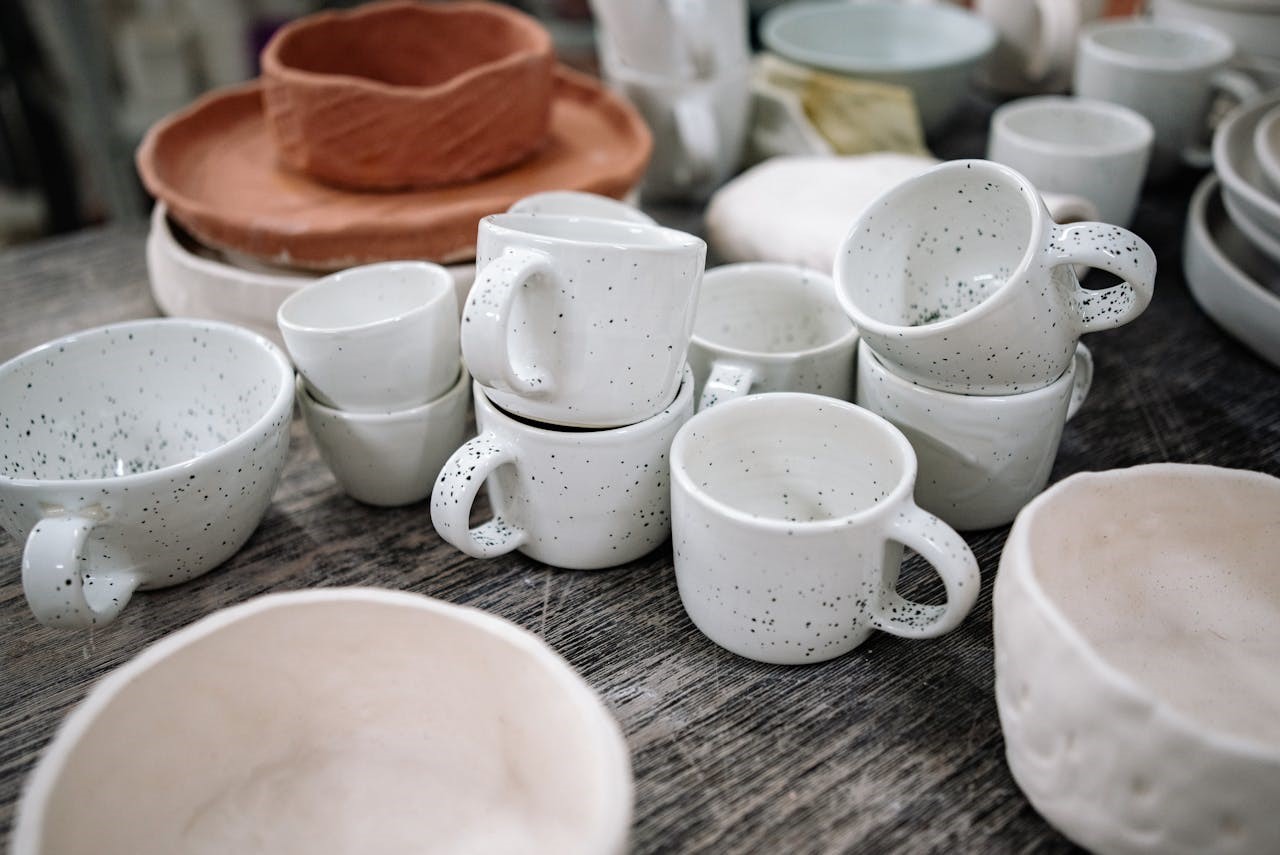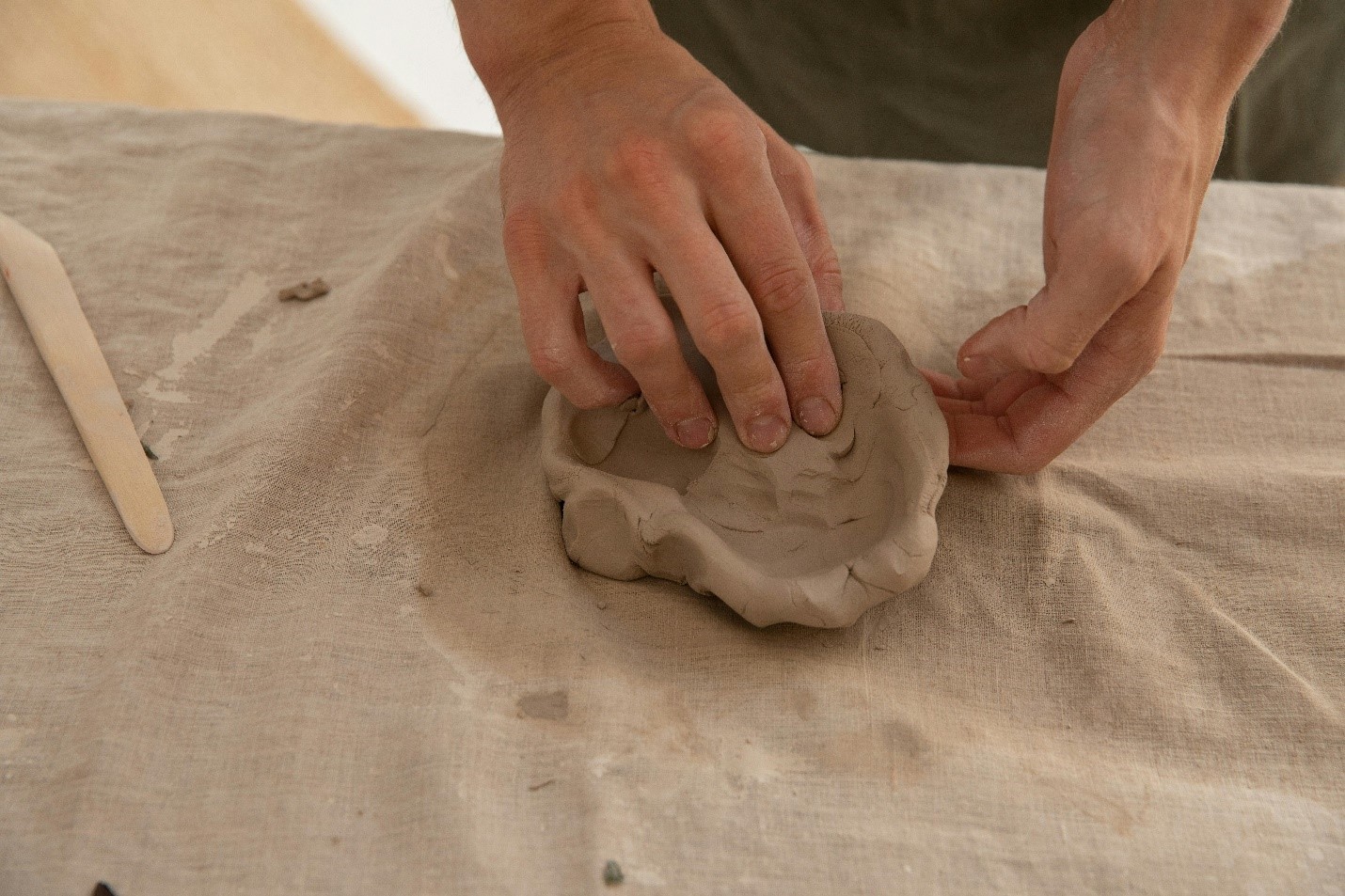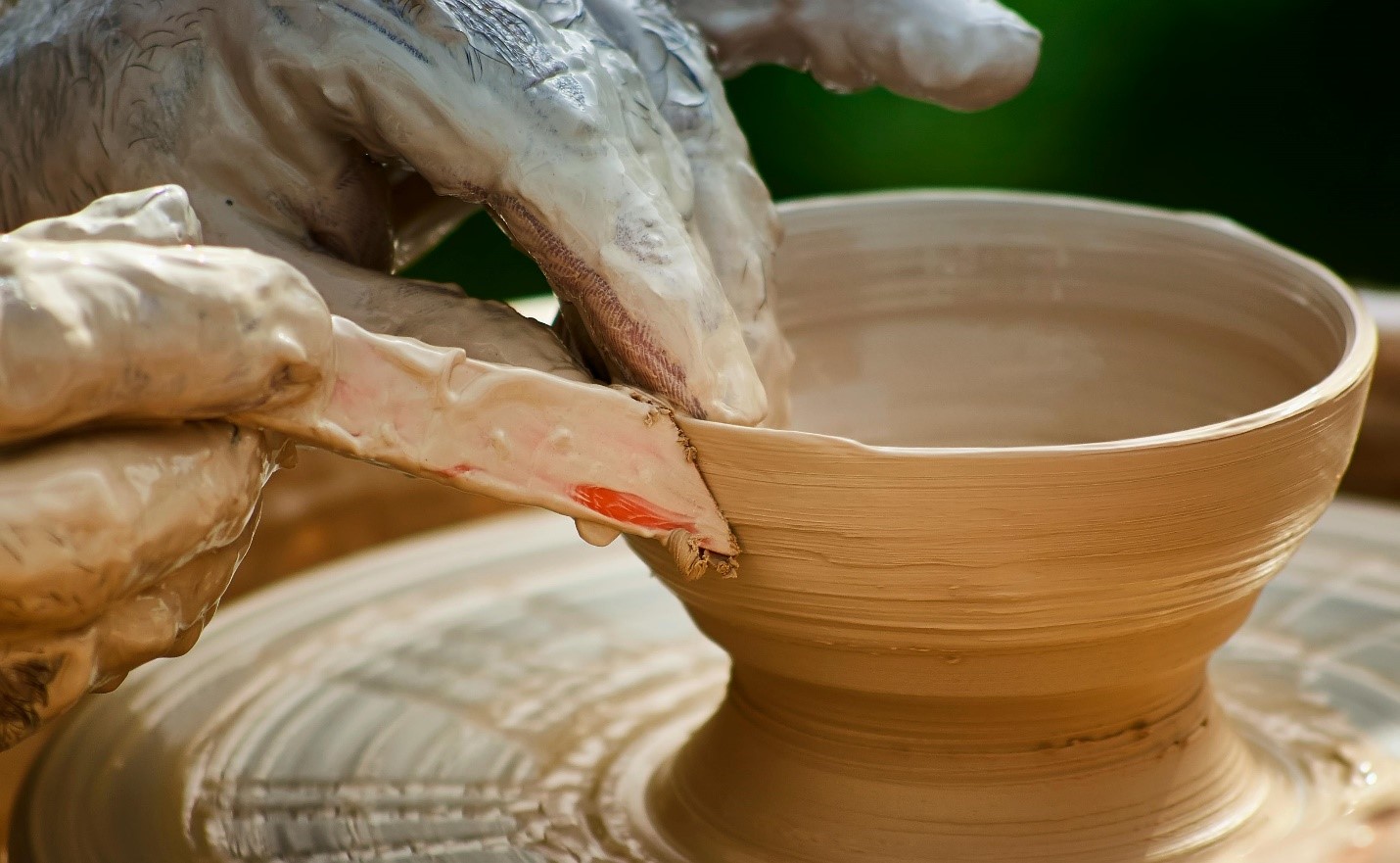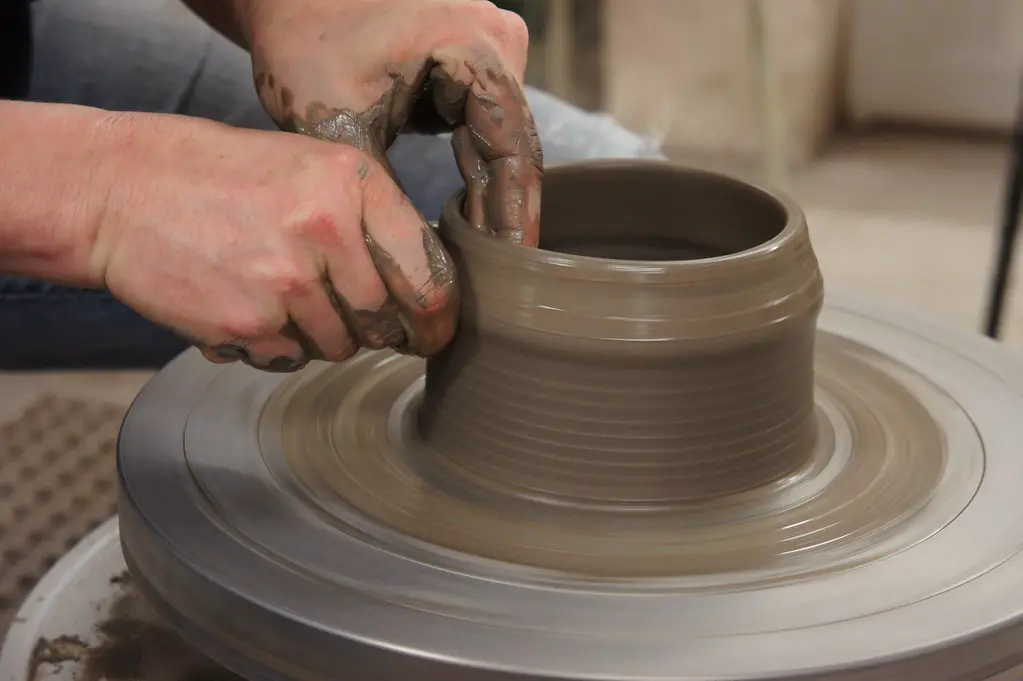Are you a passionate potter who is mesmerized by the beauty of crackle glaze? I share your love for this art form and have dedicated my time to finding the best crackle glaze recipes. The recipe I am sharing in this article has been tried and tested by many potters and is praised as one of the best out there.
So, if you’re looking for a recipe that will give your pottery a unique and stunning finish, look no further. Not only is it easy to follow, but it also produces beautiful and textured results. Whether you’re just starting or have been practicing for years, give this recipe a try and see why it’s considered one of the best.
WHAT CAUSES GLAZE TO CRACKLE ON POTTERY?
I am sure you have seen a crackle glaze on a ceramic before. You might have even bought one. As a beginner in pottery, you might ask yourself how a glazing mistake turns into a masterpiece. Your questions are going to be answered in this article. Crackle glaze is caused by crazing. It is a type of pottery glaze that is intentionally crazed. Glazes that have crazed show a fine pattern of cracks in the surface of the glaze. It is very easy to detect by simply breathing on the piece and fogging the glaze surface. Crazing is a result of a discrepancy between the coefficient of expansion of the glaze and the body of the clay. When the glaze is expanding more than the clay body, there will be crazing.
WHAT ARE CRACKLE GLAZES?
Crackle Glazes are often a network of lines or cracks in the fired-glazed surface. As earlier said, it occurs when a glaze is under tension. A craze pattern can develop immediately after removal from the kiln or years later. Some pottery pieces craze/crackle more or less than other pottery pieces depending on the clay body or glaze ratio/ lot, pottery usage exposure to extreme temperatures, etc. As said earlier, crazing is deemed to be a glazing defect, but it can be corrected. It can be corrected by reducing the difference in the expansion of the glaze or switching to a higher-expansion clay body.
Before we talk about the recipe for a great glaze crackle, let’s take some time to discuss the constituents of a glaze. You will need to know the elements of a glaze to understand the way to make an amazing crackle glaze for your pottery.
CONSTITUENTS OF CERAMIC GLAZES
There are four basic constituents of ceramic glazes. They are a glass former, a flux material, a colorant, and, a refractory component. Each has its role in the outcome of the crackle glaze material.
| CONSTITUENTS | RELEVANCE IN A GLAZE |
| Glass Former | It is used as the sand component of the glaze |
| Flux | This is the melting agent that binds the crackle glaze to the body of the clay |
| Colorant | It brings out the true beauty in every glaze |
| Refractory Component | It helps to stiffen the glaze. It keeps the pottery from breaking when being fired. |
The glass former component is also known as Silica and it is mostly sand as this quantifiable naturally forms glass when heated to extremely high temperatures. Silica sand is the desired material to use for the sand component. It is easily available through commercial mining and it saves cost. Silica can be obtained naturally from quartz, sandstone, sand, or flint, or it can be manufactured as silica oxide. When making your crackle glaze, you can add products like quartz or flint to increase the glaze adhesion ratio to the clay body of your piece. Because Silica is a mined product, it is deemed to be purer than the sand that comes from surface sources. This ensures that the glaze manufacturer has the ability to control all aspects of pottery when preparing different types of crackle glazes.
Flux is the melting agent that binds the crackle glaze to the body of the clay. It helps in lowering the melting point of silica. Flux is necessary for the glaze because it acts as a glue to hold the glaze onto the pottery piece. Without it, the glaze will melt out during the high temperatures involved in the kiln. Glaze must adhere to the piece during firing or be redone completely. If the glaze does not adhere properly, then the piece may be ruined. Sodium, calcium, and potassium are common materials added to glaze as flux.
The colorant is the beautifier element in a glaze. It brings out the true beauty in every glaze. Colorants can withstand high temperatures without burning off because they are mostly made from metallic oxides—a medium that can also affect the melting point of the glaze. Colorants can be added to a glaze to increase or decrease opacity and create pretty colors for your ceramic piece. Once the colorants melt on the body of your piece, it creates different hues that make decorating pottery with glazes so satisfying.
The final ingredient in any basic glaze mix is the refractory component. This refractory component is mostly aluminum which acts as the stiffening agent. This component is in charge of lowering the temperature at which the silica sand will melt into the glass. It is an important part of the mix because it keeps the pottery piece from breaking under the kiln at high temperatures. Without the presence of aluminum, the glaze will slide off any vertical piece. Lowering the temperature of the glass-forming ingredient does not affect the quality of the final finish. Not only does the refractory element of a glaze stiffen the glaze, but it also helps to dissolve air pockets that can form in the firing process.
Recipe for Crackle Glaze:
White Crackle Glaze with Cone 06 Oxidation
Glaze Material Percentage: Frit 3134 (Ferro) 85%, Kaolin 15
OR
Kuan Crackle Glaze with Cone 10 Oxidation
Glaze Material Percentage: Custer Feldspar79.0 %, Whiting 9.5%, Silica 9.5%, and then Bone Ash 2.0%. You can later add: Zircopax 10% and Bentonite 2.0%
Then fire your pottery to cone 10 and you can decide to stain it with some Indian Ink.
If you are limited to resources, you can make a simple crackle glaze by using Gerstley Borate of 65%, Tennesse ball clay of 5%, Nepheline Syenite of 15%, Tin Oxide of 10%, and a flux agent (silica) of 5% of.
If you are using a unique glaze and it can’t be changed or modified, try another clay body. You can try a simple Cone 06-04 white clay made from 50 parts ball clay, and probably a white clay. The white clay helps glazes aid crackle.
Use a glaze with a higher coefficient of expansion to the clay body of your piece to make the crackle or crazing effect easier. To achieve the perfect crackle desired, I will advise you to get a premixed crackle glaze from Amazon by clicking here.
HOW TO APPLY THIS RECIPE FOR CRACKLE GLAZE FOR THE BEST EFFECTS?
As we discussed, a crackle glaze is a decorative paint finish that creates a crackled appearance on surfaces. The crackle effect is created by applying a base coat of paint, followed by a medium crackle, and then a topcoat of paint. Opting for a perfect recipe for crackle glaze is the key to achieving the perfect design.
To apply crackle glaze, you will need the following:
- A base coat of paint (this will be the color that shows through the cracks)
- A crackle medium
- A top coat of paint (this will be the color of the cracks)
- Paint brushes or rollers for applying the paint
After preparing a suitable mixture, applying it is the only notable thing left to master an artifact. Here are some tips for applying this crackle glaze recipe for enhanced effects.
1. You must first apply the base coat of paint using a paintbrush. Let the paint dry entirely before proceeding to the next step. Before applying the crackle glaze, ensure that the underlying glaze is completely dry and that the piece is clean and free of dust or debris.
2. Apply the crackle glaze to the surface using a paintbrush once the base coat is dry. You can apply the crackle glaze in one or more thin layers depending on the desired cracking level.
3. Brush small rash or dust particles with the help of a smooth brush. Allow the crackle medium to dry completely. Depending on the product and the humidity and temperature in your work area, it can take anywhere from a few hours to a few days.
4. When you have applied the crackle glaze, and it has dried, it’s time to fire it. The fire temperature and time will depend on the type of crackle glaze you use. The firing temperature and time will also determine the final crackle pattern.
5. It’s important to remember that the crackle glaze will crack as it cools down. Therefore, it’s crucial to open the kiln gradually. It will prevent any sudden temperature changes that could cause the crackle glaze to crack too much.
6. Apply the topcoat of paint using a paintbrush once the crackle medium is dry. Work quickly and evenly, as the upper layer will begin to crack as it dries. Time is the key to a perfect crackle glaze.
HOW TO BRING BEAUTIFUL GLAZING IN DIFFERENT-SIZED CONES?
I tested many crackle glazing recipes in my life. Some ended in failure, and others into marvelous designs. Each crackle glazing recipe needs an appropriate amount of chemicals and perfect proportions. Here are the results for various cone-size tests.
| Cone Size | Successful Test Recipe Concentrations |
| Cone 10, reduction | Bone Ash – 4.32% Talc – 4.98% Ferro Frit 3134 – 1.99% |
| Cone 6/7, electric | Talc – 7.86 % Ferro Frit 3124 – 5.77% |
| Cone 10, reduction | Bone Ash – 5.00% Ferro Frit 3134 – 3.00% Nepheline Syenite – 91.00% |
| Cone 6/7, electric | Magnesium Carbonate – 3.949% Ferro Frit 3124 – 7.41% Nepheline Syenite – 82.74% |
These are the testing results for some of my successful crackle glazes. To make the recipe work, you must know how to apply the recipe mixture property for ideal effects. Read the following section.
TIPS TO GET THE BEST OUTCOME FROM THE RECIPE OF CRACKLE GLAZE
Here are some of my tips for you. These facts are the experimental hacks I discovered in my years of practice. They can be beneficial and considerably increase the success rate of your crackle glaze.
- You can Experiment with different types of paint and crackle mediums before working on the final project. It will help you find the best combination for your project.
- If you want a more subtle crackle effect, use a thinner layer of the crackle medium. For a more pronounced crackle effect, use a thicker layer.
- Apply crackle glaze in a warm and humid environment. The humidity will help the crackle glaze to crack correctly. You can create a humid ambiance by misting the piece with water, allowing the crackle glaze to dry quickly.
- To enhance the crackle effect, you can lightly sand the surface with fine-grit sandpaper after the topcoat dries. It’s good to use paint that is compatible with the crackle medium. Different types of paint can react differently with the medium; choose wisely.
- Another tip is to experiment with different firing temperatures and times. Different temperatures and times can produce different crackle patterns, so it is important to experiment to find the right combination for your piece.
The crackle glaze is traditionally practiced art to add a unique and interesting decorative touch to your pottery. You can create various crackle effects to suit your style and design preferences with practice and experimentation.
It can also be tricky to get the desired effect for inexperienced hands. But by following these tips and experimenting with different firing temperatures and times, you can create beautiful and unique ceramic pieces with crackle glaze.
CONCLUSION
The bottom line is that crackle glaze is one of the methods to add a definition and artistic look to the pottery. It transforms the simple-looking clay pot into artistically designed aesthetic pottery.
I hope this article has equipped me with all the information about the crackle glaze. This article covered everything from the cause of crackle glaze on pottery pieces, what crackle glazes are, the basic elements of a glaze, and recipes for crackle glaze. Now, I hope you will get inspired by this article and try making your crackle glaze perfectly.

